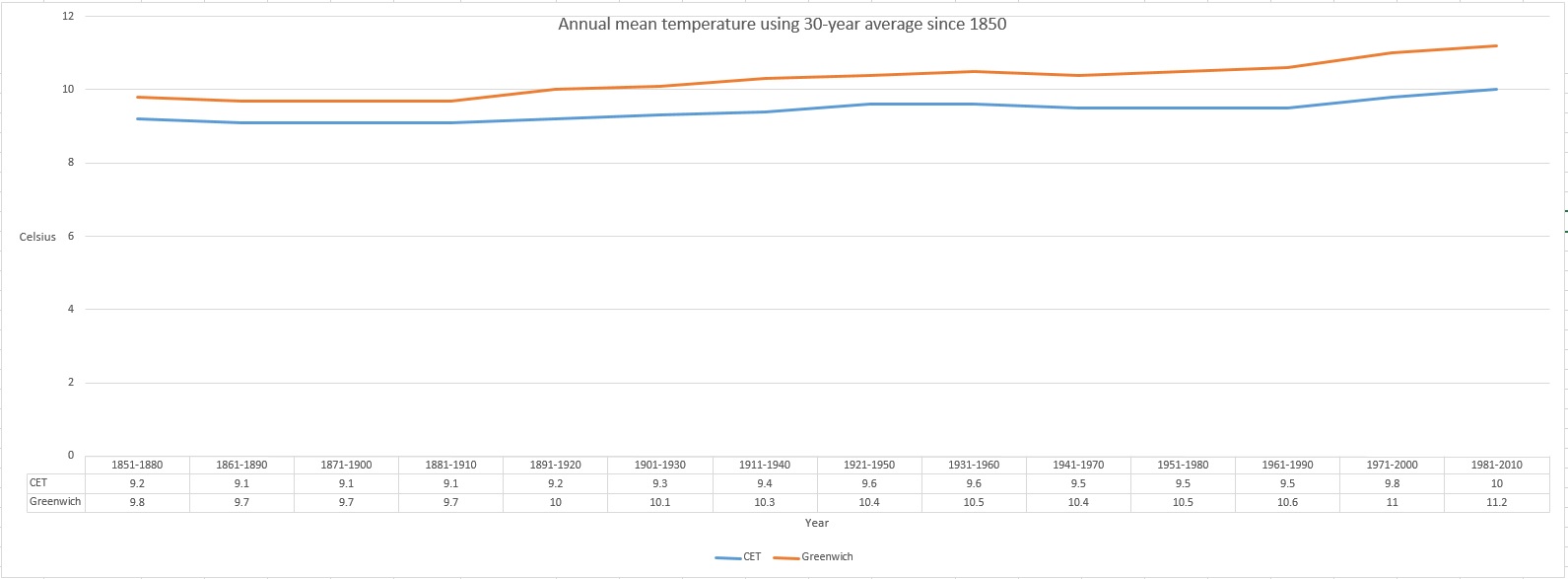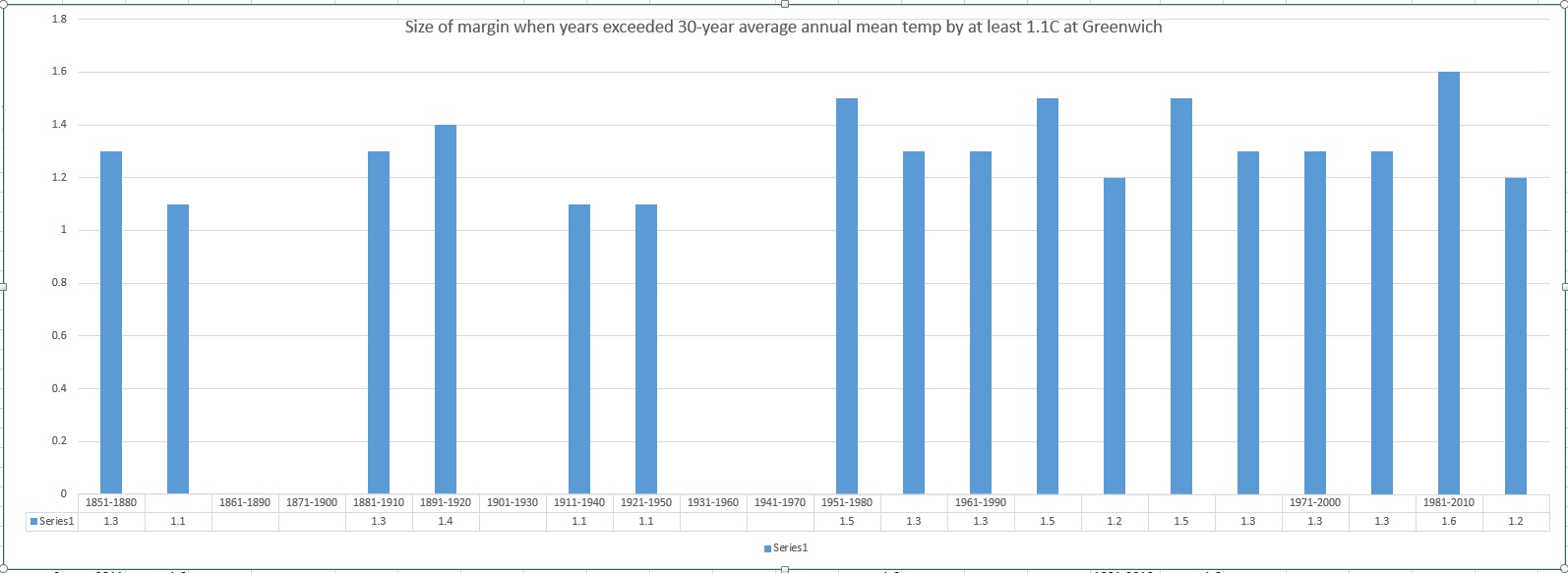This year is likely to be the warmest on record globally, statistics from the Copernicus Climate Change Service suggest.
Samantha Burgess, deputy director of the Copernicus Climate Change Service, said: “October 2023 has seen exceptional temperature anomalies, following on from four months of global temperature records being obliterated. We can say with near certainty that 2023 will be the warmest year on record, and is currently 1.43ºC above the preindustrial average.”
On a local scale the average maximum temperature, considering the rolling 12-month average, has actually decreased 0.6ºC compared with last year at this date.
Looking at the last 10 years the past 12 months have been the 3rd warmest. With a building El Nino it could be assumed that next year will see a greater increase in anomaly here but, 2015 suggests, positive ENSO can actually lead to a decrease. As can a La Nina lead to an increase, as shown in 2022.
The climate system of the world is complicated in that it doesn’t warm uniformly which leads to problems when a sizeable part of a population look out of their windows and see weather that is cold and miserable. That social media lists the ever increasing number of weather disasters around the world doesn’t seem to make a difference.
Governments and agencies have their work cut out trying to convince enough people that we really must better look after the world, starting in our own back yards.
As Burgess adds regarding the United Nations Climate Change Conference later this month: “The sense of urgency for ambitious climate action going into COP28 has never been higher.”
| Year | Rolling 12-month maximum at 7/11 | Change |
| 2014 | 16.58 | |
| 2015 | 15.53 | +1.05 |
| 2016 | 16.36 | -0.83 |
| 2017 | 15.96 | -0.4 |
| 2018 | 16.22 | +0.26 |
| 2019 | 16.21 | -0.01 |
| 2020 | 16.35 | +0.14 |
| 2021 | 15.25 | -1.1 |
| 2022 | 17.09 | +1.84 |
| 2023 | 16.49 | -0.6 |












You must be logged in to post a comment.